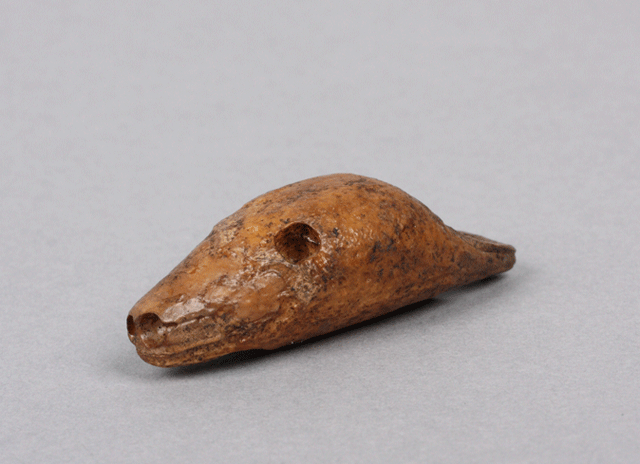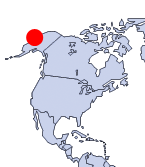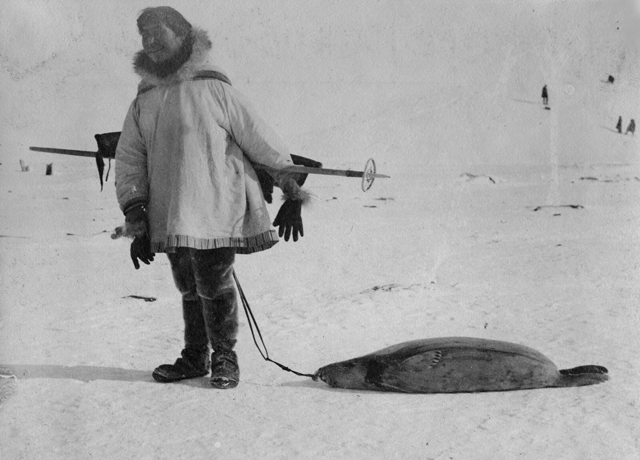


75.35.489, tow line handle of bone
Late Thule culture (A.D. 1400–1750)
Walakpa Site, Alaska
UNM research collections (depositor: Dennis Stanford)
Photograph by B. Bernard
Bone handles like this one were found at one end of leather lines. Hunters
used the lines to tow or drag freshly killed seals back to the village,
as is happening in the next photo.

89.5.17, Inupiaq hunter with seal
Wales, Alaska, 1901
Photographer: Suzanne Bernardi
Lois Minium Collection
The resemblance to a seal head is deliberate. By carving bone and ivory
in the shape of the original animal, Arctic sculptors honored the animals
they hunted. They hoped that in exchange, animals would allow
themselves to be hunted again. Thus, art helped maintain the balance
between hunters and their prey—a balance essential to the
continued success of hunting and life itself.
The final photo shows the
back of the handle, including the holes through which the leather line was
tied.

Photograph by B. Bernard
To return to the North by Southwest learning path, click here.
All content copyright © Maxwell Museum of Anthropology, University of New Mexico. High-resolution versions of photographs may be ordered from the Maxwell Museum's photo archives. Please make note of the catalogue number. For more information please visit the photo archives web page
Page last revised on June 9, 2011. Please report problems to toh@unm.edu